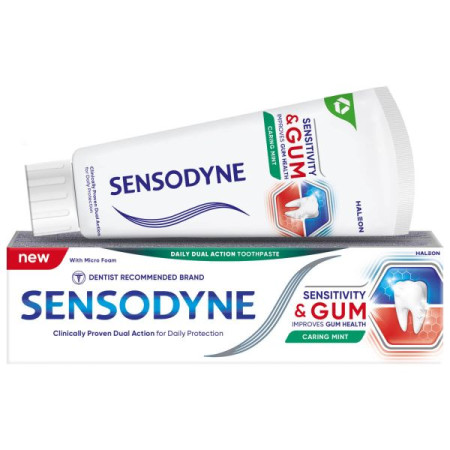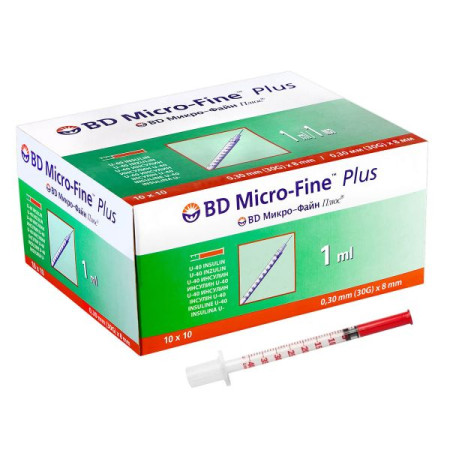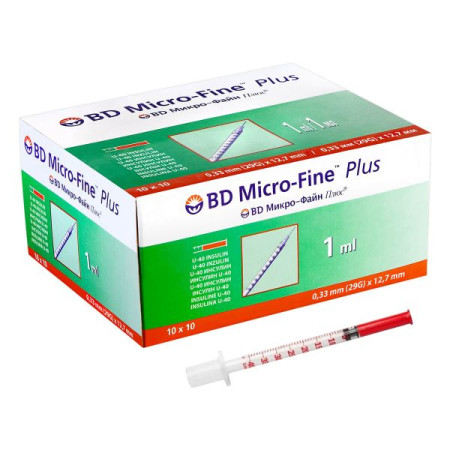Brimophthal eye drops solution 2 mg/ml bottle 5 ml

Instructions Brimophthal eye drops solution 2 mg/ml bottle 5 ml
Composition
active ingredient: brimonidine;
1 ml of solution contains 2 mg brimonidine tartrate, equivalent to 1.3 mg brimonidine;
Excipients: benzalkonium chloride; polyvinyl alcohol; sodium chloride; sodium citrate; citric acid, monohydrate; hydrochloric acid 1 M; sodium hydroxide 1 M; purified water.
Dosage form
Eye drops, solution.
Main physicochemical properties: clear as water, without visible particles, slightly greenish-yellow solution.
Pharmacotherapeutic group
Sympathomimetics for the treatment of glaucoma.
ATX code S01E A05.
Pharmacological properties
Pharmacodynamics
Brimonidine is an alpha-2-adrenergic receptor agonist that is 1,000-fold more selective for alpha-2-adrenergic receptors than alpha-1-adrenergic receptors. This selectivity results in the absence of mydriasis and microvascular vasoconstriction associated with human retinal xenografts.
Topical application of brimonidine tartrate results in a reduction in intraocular pressure in humans with little effect on the cardiovascular and respiratory systems.
Clinical data on the safe use of the drug in bronchial asthma are limited.
Intraocular pressure (IOP) begins to decrease quite quickly after application of the drug, with a maximum decrease observed after 2 hours. Brimonidine reduces intraocular pressure by reducing aqueous humor and slightly increasing uveoscleral outflow.
Brimonidine has a rapid onset of action, with peak ocular hypotensive effect occurring 2 hours after application. In two one-year studies, brimonidine reduced intraocular pressure (IOP) by a mean of approximately 4-6 mmHg.
Fluorophotometric studies in animals and humans suggest that brimonidine tartrate has a dual mechanism of action. Brimonidine is thought to lower intraocular pressure (IOP) by reducing aqueous humor production and increasing uveoscleral outflow.
Studies show that brimonidine is effective in combination with topical beta-blockers. Short-term studies also suggest that brimonidine has a clinically meaningful additive effect when combined with travoprost (6 weeks) and latanoprost (3 months).
Pharmacokinetics
General characteristics.
After instillation of a 0.2% solution of the drug 2 times a day for 10 days, its concentration in the blood plasma was low (average Cmax was 0.06 ng/ml). After repeated administration (2 times a day for 10 days), insignificant cumulation of the drug in the blood was observed. The area under the pharmacokinetic curve after 12 hours in the steady-state phase (AUC-0-12 hours) was
0.31 ng h/ml compared to 0.23 ng h/ml after the first dose. After topical administration, the mean elimination half-life from the systemic circulation was approximately
3 hours.
The binding of brimonidine to plasma proteins after topical administration is approximately 29%.
Brimonidine reversibly binds to melanin in ocular tissues, both in vitro and in vivo. After 2 weeks of instillation into the eyes, brimonidine concentrations in the iris, ciliary body, and choroid were 3-17 times higher than after a single dose. Accumulation is not observed in the absence of melanin. The significance of melanin binding is unknown.
However, no significant adverse reactions were observed in biomicroscopic examination of the eyes of patients treated with brimonidine for one year, and no significant toxicity was observed in a one-year visual safety study in monkeys administered approximately four times the recommended doses of brimonidine tartrate.
After oral administration, brimonidine is well absorbed and rapidly excreted. The majority of the dose (approximately 75%) is excreted as metabolites in the urine within 5 days. No unchanged brimonidine is found in the urine.
In vitro studies using animal and human liver indicate that metabolism is primarily mediated by aldehyde oxidase and cytochrome P450. Therefore, systemic elimination is primarily via hepatic metabolism.
The drug is metabolized mainly by aldehyde oxidase and cytochrome P450. Thus, systemic elimination occurs mainly through first-pass metabolism in the liver.
After a single dose of the drug at doses of 0.08%, 0.2% and 0.5%, there was no significant deviation of plasma Cmax and AUC proportional to dose.
Features of use in certain groups of patients.
Elderly patients.
Following a single dose, the plasma Cmax, AUC, and half-life of brimonidine in elderly patients (65 years and older) were not different from those in younger patients, indicating that age does not affect systemic absorption and elimination.
Based on data from a study involving elderly patients, systemic exposure to brimonidine was very low.
Indication
Use to reduce elevated intraocular pressure in patients with open-angle glaucoma or elevated intraocular pressure:
- as part of combination therapy with other drugs that reduce intraocular pressure, if the pressure reduction with the use of these drugs is insufficient.
Contraindication
Hypersensitivity to the active substance or to the excipients of the medicinal product.
Concomitant use with monoamine oxidase inhibitors (MAOIs) and antidepressants that affect noradrenergic transmission (e.g. tricyclic antidepressants and mianserin)
Pregnancy or breastfeeding.
Neonates and infants (see section "Adverse reactions").
Interaction with other medicinal products and other types of interactions
Brimophthal is contraindicated in patients receiving monoamine oxidase inhibitors (MAOIs) and in patients taking antidepressants that affect noradrenergic transmission (e.g. tricyclic antidepressants and mianserin) (see section "Contraindications").
Although specific drug interactions of brimonidine have not been studied, the possibility of an additive or potentiating effect of the drug on the effects of CNS depressants (alcohol, barbiturates, opiates, sedatives, and anesthetics) should be considered.
There are no data on plasma catecholamine levels following administration of brimonidine. However, brimonidine should be administered with caution to patients taking drugs that affect metabolism and increase plasma amine concentrations (e.g. chlorpromazine, methylphenidate, reserpine).
After the use of brimonidine, clinically insignificant decreases in blood pressure were observed in some patients. Caution should be exercised when prescribing brimonidine and antihypertensive agents and/or cardiac glycosides simultaneously.
Monitoring is recommended at the beginning of treatment (or when increasing the dose of the drug) in combination therapy with systemic agents (regardless of their dosage form) that may interact with alpha-adrenergic agonists or affect their effectiveness (for example, adrenergic receptor agonists or antagonists - isoprenaline, prazosin).
Application features
Children aged 2 years and above, especially those aged 2 to 7 years and/or weighing less than 20 kilograms, should be treated with special care and under constant supervision, given the high frequency and degree of drowsiness.
The drug should be used with caution in patients with severe or unstable and uncontrolled cardiovascular disease.
Some patients in studies experienced an allergic-type ocular reaction after using brimonidine (see section 4.8).
If allergic reactions occur, treatment with brimonidine should be discontinued.
Delayed ocular hypersensitivity reactions have been reported with brimonidine, which have been associated with increased intraocular pressure (IOP).
The drug should be used with caution in patients with depression, cerebrovascular insufficiency, coronary insufficiency, Raynaud's syndrome, orthostatic hypotension, or thromboangiitis obliterans.
Since the effects of brimonidine in patients with hepatic or renal impairment have not been studied, the drug should be used with caution in such patients.
Brimophthal contains benzalkonium chloride as a preservative, which may cause local eye irritation. Contact with soft contact lenses should be avoided. Contact lenses should be removed before instillation and reinserted 15 minutes after instillation. Cases of discoloration of soft contact lenses have been reported.
Benzalkonium chloride may also cause eye irritation, especially if you have dry eyes or corneal disorders (the clear front part of the eye). If you experience discomfort, burning, or pain in your eyes after using this medicine, you should consult a doctor.
Use during pregnancy or breastfeeding
Studies on the safety of the drug in pregnant women have not been conducted, therefore Brimophthal should not be used during pregnancy. It is not known whether brimonidine passes into breast milk, therefore the drug should not be used during breastfeeding.
Ability to influence reaction speed when driving vehicles or other mechanisms
The use of Brimophthal may cause fatigue and/or drowsiness, which may impair the ability to drive or operate machinery. Brimophthal may cause blurred vision and/or impaired vision, which may impair the ability to drive or operate machinery, especially at night or in poor lighting. The patient should wait until these symptoms have disappeared before driving or operating machinery.
Method of administration and doses
Instill 1 drop of brimonidine into the affected eye twice daily at equal intervals (approximately 12 hours apart). No dose adjustment is required for elderly patients.
As with any eye drop, to reduce the potential for systemic absorption of the drug, it is recommended to press the lacrimal sac in the medial canthus for 1 minute (punctal occlusion). This should be done immediately after instillation of each drop of the drug. If more than one type of eye drop is prescribed, they should be instilled with an interval of 5-15 minutes.
Brimonidine has not been studied in patients with hepatic or renal impairment (see section 4.4).
Children.
Clinical studies on the use of the drug in adolescents (12 to 17 years old) have not been conducted.
Brimonidine is not recommended for use in children under 12 years of age and is contraindicated in neonates and infants (under 2 years of age) (see Contraindications, Precautions and Overdose). Neonates are known to experience serious adverse reactions following administration of the drug.
Overdose
Overdose in ophthalmic use (adults)
All known cases of overdose have already been listed as adverse reactions.
Serious adverse reactions have been reported in children following accidental oral administration of brimonidine. The symptoms included central nervous system (CNS) depression, typically transient coma or near-consciousness; lethargy, drowsiness, hypotension, bradycardia, hypothermia, pallor, respiratory depression, and apnea, requiring intensive care with incubation if necessary. All patients recovered completely within 6 to 24 hours.
Systemic overdose due to accidental ingestion (adults).
The only adverse event reported to date was hypotension. There have also been reports of rebound hypertension following a hypotensive episode.
Treatment of oral overdose includes supportive and symptomatic therapy; the patient's respiratory function should be maintained.
The following symptoms have been reported with oral overdose of other alpha-2-agonists: hypotension, asthenia, vomiting, lethargy, sedation, bradycardia, arrhythmia, miosis, apnea, hypothermia, cyanosis, respiratory depression and convulsions. Treatment is symptomatic.
Adverse reactions
The most commonly reported adverse reactions were dry mouth, ocular hyperemia, and inflammation/burning, occurring in 22-25% of patients. These were generally transient and were rarely severe enough to require discontinuation of treatment.
Symptoms of ocular allergic reactions were observed in 12.7% of patients (causing a difference in 11.5% of patients) in studies with onset between 3 and 9 months in the majority of patients.
Within each frequency grouping, adverse reactions are presented in order of decreasing incidence. The following terminology is used to classify the occurrence of adverse reactions: very common (≥1/10); common (≥1/100 to <1/100);
Frequency unknown (cannot be estimated from available data).
From the heart:
uncommon: palpitations/arrhythmia (including bradycardia and tachycardia).
From the nervous system:
very common: headache, drowsiness;
common: dysgeusia, taste perversion;
very rare: syncope.
On the part of the organs of vision:
very common: eye irritation, including allergic reactions (hyperemia, inflammation and burning, itching, foreign body sensation, follicular conjunctivitis), blurred vision, allergic blepharitis, allergic blepharoconjunctivitis, allergic conjunctivitis, ocular allergic reaction and follicular conjunctivitis;
common: local irritation (hyperemia and edema of the eyelids, blepharitis, conjunctival edema and eye discharge, eye pain and lacrimation), photophobia, corneal erosion and keratopathy, dry eyes, conjunctival pallor, visual impairment, conjunctivitis;
very rare: iritis, miosis.
On the part of the respiratory system:
common: symptoms of upper respiratory tract disease;
uncommon: dryness of the nasal mucosa;
Rare: dyspnea.
From the digestive tract:
very common: dry mouth;
common: gastrointestinal symptoms.
From the vascular system:
very rare: hypertension, hypotension.
General disorders:
very common: increased fatigue;
common: asthenia.
On the part of the immune system:
uncommon: systemic allergic reactions (hypersensitivity).
From the psyche:
uncommon: depression;
very rare: insomnia.
The following adverse reactions have been identified during post-marketing use of brimonidine in clinical practice. As they were reported voluntarily from a population of unknown size, no conclusions can be drawn about their frequency.
On the part of the organs of vision:
frequency unknown: iridocyclitis (anterior uveitis);
- itching of the eyelids.
Skin and subcutaneous tissue disorders:
frequency unknown: skin reaction, including erythema, facial edema, pruritus, rash, vasodilation.
In cases where brimonidine was used as part of medical treatment for congenital glaucoma, symptoms of brimonidine overdose such as loss of consciousness, lethargy, drowsiness, hypotension, bradycardia, hypothermia, cyanosis, pallor, and respiratory failure have been reported in neonates and infants receiving brimonidine.
In studies in children aged 2 to 7 years with glaucoma inadequately controlled with beta-blockers, a high prevalence of somnolence (55%) was reported when brimonidine was used as adjunctive therapy. 8% of children had a severe course, and 13% of cases resulted in discontinuation of treatment.
children aged 7 years (25%), but the reduction was largely due to the effect of body weight, occurring more frequently in children weighing 20 kg (63%) compared to children weighing > 20 kg
(25%).
Reporting of suspected adverse reactions
It is important to report suspected adverse reactions after a medicinal product has been authorised. This allows for continued monitoring of the benefit/risk balance of the medicinal product. Qualified healthcare professionals are asked to report all suspected adverse reactions.
Expiration date
4 years. After first opening – 28 days.
Storage conditions
Does not require special storage conditions.
Keep out of reach of children.
Packaging
5 ml of solution in a low-density polyethylene bottle with a dropper and a white high-density polyethylene cap; 1 bottle in a cardboard box.
Vacation category
According to the recipe.
Producer
LLC "Santonika".
Location of manufacturers and their business address.
St. Vieveru 134B, m. Kaunas, Kauno m.sav., LT-46353, Lithuania.
There are no reviews for this product.
There are no reviews for this product, be the first to leave your review.
No questions about this product, be the first and ask your question.













